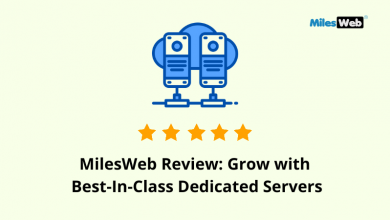Know How An Application Modernization Solution Supports Digital Transformation Goals

If you ask ten business leaders what digital transformation means, you’ll probably get ten different answers. Some think it’s about moving everything to the cloud. Others think it’s all about customer apps. In reality, transformation is about keeping up with fast change. And one of the biggest hurdles? Old systems that can’t keep pace.
That’s where application modernization solutions step in. They don’t just fix what’s broken; they re-shape what already exists so businesses can actually move forward instead of patching holes year after year.
Modernization in Plain Words
Think of it like renovating a house. You don’t tear down the whole building, you reinforce the structure, replace what’s outdated, and add features that make sense today. Application modernization solution works the same way. Instead of clinging to clunky legacy software, companies update it to be faster, safer, and more adaptable.
Why It Matters for Transformation
- Agility First
Old systems slow everything down. Shipping new features might take weeks or months. With modernization – whether through microservices, cloud migration, or automation pipelines updates roll out in days. It’s the kind of flexibility that lets businesses respond to customers instead of being trapped by their own systems.
- Security Isn’t Optional
Cyber risks aren’t going away. A legacy platform is basically an open invitation for trouble. Modern solutions build in stronger defenses, regular patches, and smarter monitoring. Plus, compliance becomes far less of a headache.
- Performance Under Pressure
Picture a retailer on Black Friday. If the backend can’t handle the surge, customers leave and rarely come back. A modernized app, built for scaling, pulls in extra capacity instantly. No downtime, no lost sales.
- Integration That Actually Works
Businesses today run dozens of systems – analytics, CRMs, AI tools, payment platforms. Modernization makes them talk to each other through APIs and services. The end result is fewer silos and smoother workflows.
- Cutting the Hidden Costs
Maintaining outdated tech drains money and energy. It’s like pouring fuel into an old generator that barely runs. Companies that modernize often report big cost reductions, sometimes close to half. More importantly, their teams spend time building new capabilities, not fixing old ones.
Getting Started Without Getting Stuck
Start by auditing what you have. Which systems are hardest to maintain or slow growth? Be clear on what you want – speed, letter customer experience, lower costs. Each goal suggests a different approach. Another important step is involving the right people early. Modernization isn’t just an IT project; it impacts operations, finance, and customer-facing teams too. Gathering input from across departments helps avoid blind spots and ensures that upgrades actually support business goals. Some companies also run workshops or discovery sessions before writing a single line of code, which creates alignment and builds confidence in the process. Planning small wins upfront like reducing downtime or automating a repetitive task makes the journey less overwhelming and proves value quickly.
Don’t try to modernize everything at once. Pick one critical app and pilot the process. Track the results: deployment speed, error reduction, customer satisfaction. Then expand.
Conclusion
Digital transformation sounds big and abstract, but application modernization solutions make it practical. They let companies move faster, stay secure, cut costs, and connect the dots across their tech landscape.
In a market where change is the only constant, modernization isn’t a luxury – it’s the price of staying in the game.






